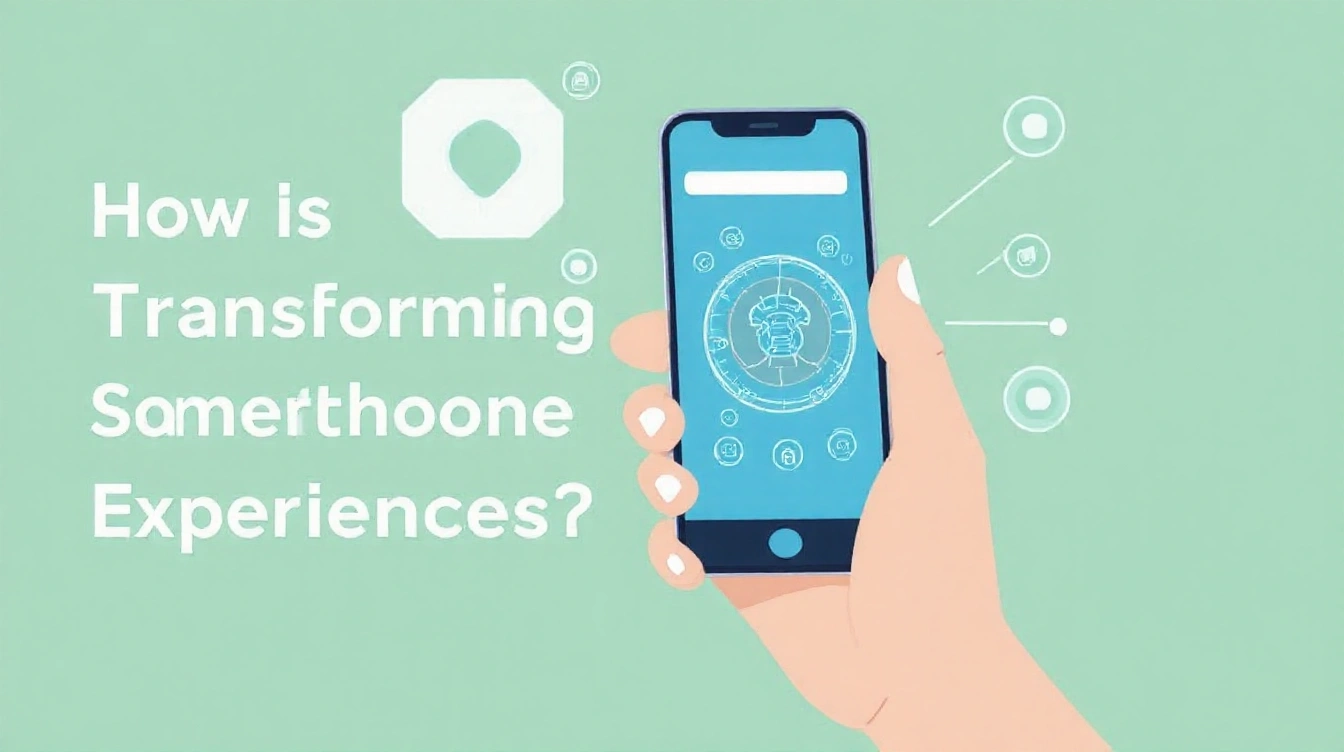AI-Powered Personalization in Smartphones
Artificial intelligence has revolutionized tailored smartphone experiences by customizing operating systems and app interfaces to user preferences. AI personalization enables smartphones to learn user habits and adjust settings accordingly. For example, adaptive interfaces change layouts based on how and when users interact with their device, making navigation smoother and more intuitive.
AI-driven adaptive notifications take personalization further by delivering relevant alerts at appropriate times. Instead of constant interruptions, users receive suggestions aligned with their routines and priorities. This intelligent timing improves focus and reduces notification fatigue.
Have you seen this : How Do Smartphones Influence Our Daily Habits and Lifestyle?
Enhanced accessibility features, empowered by AI, also contribute significantly to personalization. Voice recognition, real-time transcription, and predictive text tools make smartphones more usable for people with varied needs. AI personalization identifies specific accessibility requirements and adapts functions like screen readers or gesture controls, ensuring a seamless experience.
Ultimately, adaptive interfaces combined with AI create a dynamic environment that evolves alongside the user. This continuous optimization of user interactions exemplifies how AI personalization is not only making smartphones smarter but also more empathetic to individual habits and preferences.
In the same genre : What Innovations Are Expected in the Future of UK Smartphone Technology?
Intelligent Voice Assistants and Their Evolving Capabilities
Voice assistants have made significant leaps in natural language processing, enabling smoother and more intuitive AI communication. Today’s voice assistants not only recognize individual words, but also understand context, tone, and intent, which enhances accuracy in responding to user commands.
Integration with multiple device functions is another advancement. Voice assistants now seamlessly control smart home ecosystems, manage calendars, send messages, and even adjust settings on connected devices—all through voice commands. This creates a truly interconnected experience, reducing the need for manual operation.
Moreover, hands-free control has amplified their accessibility and usefulness. Whether cooking, driving, or multitasking, users benefit from voice assistants that respond promptly and accurately without physical interaction. This is especially valuable for individuals with mobility challenges, providing an inclusive way to engage with technology.
By combining precise speech recognition, contextual analysis, and expanded device integration, modern voice assistants deliver a powerful blend of convenience and efficiency. Embracing these tools can elevate daily routines, improve productivity, and foster more natural AI communication.
AI-Driven Camera Enhancements
Harnessing AI camera features, modern devices excel at real-time scene recognition and automatic adjustments. This technology analyzes your surroundings instantly, tweaking exposure, color balance, and focus without manual input. For example, when capturing a sunset or a fast-moving subject, AI optimizes settings to produce clearer, more vibrant photos.
Computational photography revolutionizes both photo and video editing by integrating AI algorithms directly into the device. These algorithms can reduce noise, enhance detail, and even adjust lighting after you’ve taken the picture, offering advanced editing capabilities without third-party software.
Low-light conditions historically challenged photographers, but AI algorithms now improve sensor data to brighten images while preserving natural colors and reducing grain. Similarly, portrait modes benefit from AI by accurately mapping facial features to apply background blur and skin tone enhancements, creating professional-looking shots effortlessly.
Together, image processing powered by AI allows users to capture higher-quality images across diverse scenarios, making photography more accessible and enjoyable. These smart enhancements reduce the need for manual tweaks, giving immediate impressive results, regardless of lighting or complexity in the scene.
Enhanced Security and Privacy through AI
Artificial intelligence has revolutionized AI security by enabling advanced biometric authentication methods such as facial recognition and fingerprint scanning. These AI-driven technologies provide a fast, accurate, and secure way to unlock devices and verify identities, reducing the risk of unauthorized access.
AI also plays a crucial role in fraud detection and spam filtering. By continuously analyzing patterns and behaviors, AI can identify suspicious activities and block potential threats in real-time. This proactive approach helps protect sensitive information from cyberattacks and phishing attempts that might compromise privacy.
In addition, AI enhances privacy features by managing app permissions dynamically. It monitors app behavior to ensure that personal data is accessed only when necessary and alerts users to unusual permission requests. These intelligent controls give users greater visibility and control over their personal information, fostering trust.
With the integration of AI in mobile devices, users benefit from a seamless balance between convenience and strong security measures. AI security tools not only safeguard data but also simplify the process, making it less intrusive while maintaining robust privacy protection. This technology is becoming indispensable in today’s digital landscape, where securing personal data is paramount.
Innovations and Real-World Applications of AI on Smartphones
Artificial intelligence has revolutionized smartphone functionality beyond basic tasks, embedding smartphone AI innovations that users engage with daily. One standout example is adaptive battery management. By learning user habits, smartphones intelligently adjust background processes and reduce power consumption, enhancing battery life without sacrificing performance. This practical AI use case allows devices to sustain longer usage between charges, aligning with user routines for optimized energy efficiency.
Real-time language translation exemplifies how real-world AI features break down communication barriers. Using AI algorithms, smartphones can instantly translate conversations, text, or signs, ensuring smooth interaction regardless of language differences. This capability not only supports travelers but also improves accessibility for users with diverse linguistic needs, emphasizing AI’s role in making technology more inclusive.
Another compelling practical AI use case is found in AI-powered health and wellness applications. These AI tools monitor vital signs, analyze sleep patterns, and provide personalized fitness coaching directly through a smartphone. By offering tailored insights, they encourage healthier habits and empower users to take proactive control of their health.
Together, these innovations showcase the transformative potential of AI on smartphones, making devices smarter, more efficient, and significantly more helpful in day-to-day life.
Future Trends: How AI Will Continue to Transform Smartphone Experiences
Artificial intelligence is set to redefine the future of AI in smartphones by pushing the boundaries of on-device processing. Upcoming AI trends include more powerful and efficient chips capable of handling complex tasks like natural language understanding and real-time image recognition, all performed locally on the device. This shift enhances privacy and responsiveness, which users increasingly demand.
The evolving user experience will see AI deeply integrated into app ecosystems, enabling smarter personalization. Apps could predict user needs intuitively, automating routine tasks and offering recommendations based on context. For instance, voice assistants will become more conversational, understanding nuances to provide relevant information swiftly. This will reshape daily interactions, making smartphones indispensable personal companions rather than mere tools.
However, these advancements come with challenges. Ethical considerations about data privacy, algorithmic bias, and transparency must be addressed to cultivate user trust. Developers and manufacturers face the task of balancing innovation with responsible AI use to avoid intrusive experiences while maintaining functionality.
In summary, the future of AI in smartphones promises a more intelligent, seamless, and personalized interaction. As upcoming AI trends reshape apps and usage patterns, it is crucial to steer these innovations thoughtfully and ethically to maximize benefits for users worldwide.





